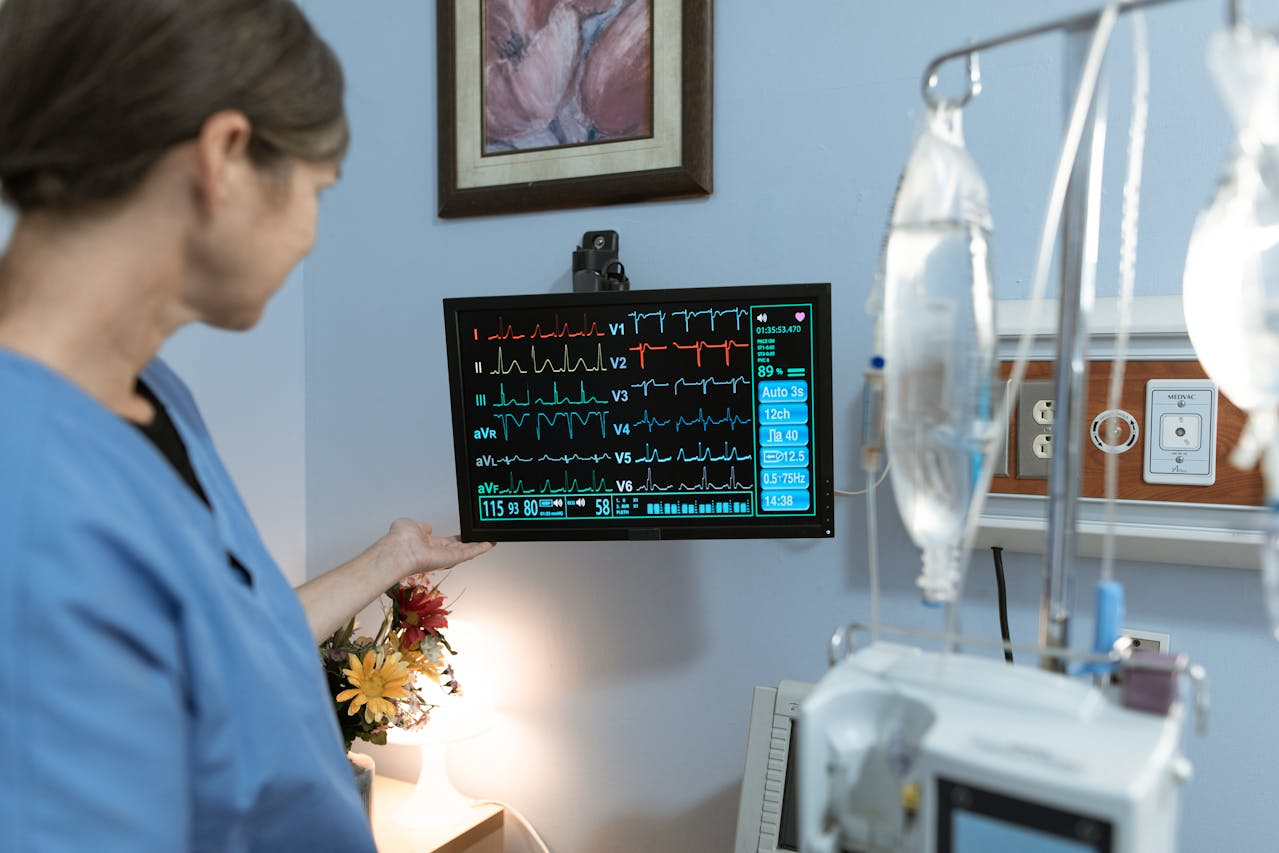
Real-time performance isn’t a buzzword in medical technology. It’s a promise. A commitment that the system will react as expected, in precisely the time it’s supposed to—no sooner, no later. In a clinical setting, microseconds can matter. Delays aren’t just inconvenient; they can be dangerous. And when developing embedded systems for medical devices, I’ve learned that achieving real-time behavior is less about raw speed and more about predictability, design discipline, and knowing where to make trade-offs.
What “Real-Time” Really Means in Medicine
“Real-time” in embedded systems doesn’t always mean “fast.” It means guaranteed. If a wearable heart monitor is set to sample data every 5 milliseconds, it must do so consistently—even if background tasks or wireless transmissions are happening simultaneously.
In some domains, dropping a frame or a delayed response is an acceptable compromise. In medicine, that’s rarely the case. A missed sensor reading might mean a missed cardiac anomaly. A delay in actuation could alter the dosage of a drug. In short: reliability isn’t optional.
The Hidden Complexity Behind the Scenes
The real-time challenge is rarely about a single component. It’s a complex interaction between:
- Sensors constantly collecting patient data
- Microcontrollers or processors executing control logic
- Firmware responsible for task scheduling
- Communication stacks transmitting data to external systems
- User interfaces that must stay responsive
One system, hundreds of constraints. And yet, it all has to work seamlessly.
Not All Code Is Created Equal
One of the most surprising realizations I had early in my career was that writing code for real-time systems isn’t about doing more—it’s about doing less more carefully. Every function must be reviewed not only for what it does, but how long it takes and under what conditions it might stall.
In most applications, a one-second delay might be annoying. In a real-time medical system, it could trigger a cascade of failures. That’s why I spend more time optimizing interrupt service routines and profiling execution paths than I do adding features.
And when we use real-time operating systems (RTOS), the choice of scheduler and how tasks are prioritized becomes just as important as the algorithm itself.
Balancing Act: Performance vs. Power vs. Cost
There’s always a triangle to manage: performance, power consumption, and hardware cost.
On one project, we had a continuous glucose monitor that needed to run a signal processing algorithm in under 50 microseconds—on a battery-powered device expected to last 10 days. Faster processors would help, but they’d drain the battery. More RAM would allow better buffering, but increase board complexity and cost. In the end, the solution was a mix of hand-optimized firmware and hardware acceleration modules—achieved only after several iterations and real-time profiling.
These trade-offs aren’t just technical. They affect BOM costs, development time, regulatory documentation, and ultimately, market viability.
Testing for Real-Time Isn’t Optional
When I say that real-time guarantees must be proven, I mean it literally. It’s not enough to assume performance from theory or specifications. Every embedded medical system I’ve worked on required stress testing, timing analysis, and edge-case simulations.
We use tools like logic analyzers, digital oscilloscopes, and trace debuggers not because we like complexity—but because we can’t afford surprises in the field. Real-time performance is verified in the lab, under simulated loads, and in long-duration tests.
Sometimes, that means writing dedicated test harnesses or running continuous integration systems that validate response times against known limits. It’s intensive—but nothing compared to the cost of discovering a missed deadline during clinical trials.
Latency vs. Throughput: Knowing the Difference
One common misunderstanding I’ve seen is the confusion between throughput and latency. A system might process large volumes of data efficiently (high throughput) but still fail at real-time if its response time to critical events isn’t guaranteed (high latency).
In medical applications, we often prioritize low latency. For example, in an automated external defibrillator (AED), the time it takes to analyze cardiac rhythm and issue a shock can be the difference between life and death. High throughput doesn't help here—deterministic response does.
Firmware Design: Where Real-Time Is Won or Lost
The firmware layer is often underestimated, especially by teams focusing on hardware innovation. But in real-time systems, firmware design is where everything comes together.
I’ve learned to:
- Avoid dynamic memory allocation at runtime
- Use cooperative multitasking for non-critical tasks
- Tune the scheduler for task priorities that reflect clinical risk
- Profile and cap execution times of non-interrupt code
Each of these decisions contributes to predictability, which is at the core of any real-time design.
Communication Stacks: The Silent Bottlenecks
Wireless modules like Bluetooth Low Energy (BLE), Wi-Fi, or proprietary protocols are great for connectivity—but they introduce unpredictable delays. I’ve encountered issues where even a simple transmission causes jitter in data acquisition routines.
The fix often lies in buffering, deferred execution, or using separate cores or DMA channels. It’s these architectural decisions that determine whether a product feels seamless to the end-user or becomes a source of frustration.
Regulatory Perspective: Why Real-Time Is a Compliance Matter
Regulatory bodies like the FDA and European MDR don’t just expect medical devices to work—they expect them to prove how and why they work reliably. That includes demonstrating real-time performance in safety-critical functions.
This shifts real-time from a design goal to a documentation requirement. We need timing charts, test logs, and validated performance metrics. And that can only happen if real-time is baked into the design from day one.
The Team Behind the System
No matter how strong the architecture is, real-time performance is ultimately delivered by the team implementing it. That’s why I’ve learned to value collaboration with experienced engineers—people who understand how interrupts work, how to balance CPU load, and how to make hard choices under pressure.
Working with companies like Scythe Studio - where real-time embedded expertise meets regulatory fluency—makes a huge difference. They bring more than coding skills; they bring systems thinking, quality assurance, and a deep respect for medical device constraints.
It’s not just about getting it to work—it’s about making it work right, every time, with no surprises.
Looking Ahead: Smarter Devices, Higher Expectations
As the industry moves toward AI-assisted diagnostics, closed-loop drug delivery, and personalized health analytics, the real-time demands only increase. We’re no longer just collecting data—we’re making decisions based on it, often instantly.
This raises the bar. We need smarter schedulers, better power-aware processing, and integrated safety mechanisms. And that’s where real-time design stops being just a feature—and becomes the backbone of trust in a medical device software development.
Final Thoughts
Real-time performance isn’t flashy. It doesn’t headline product brochures or dominate sales presentations. But behind every successful medical device is a quiet promise: that the system will respond, reliably and predictably, under every circumstance that matters.
Delivering on that promise takes more than fast hardware. It takes discipline, insight, testing—and the wisdom to know when timing is everything.







